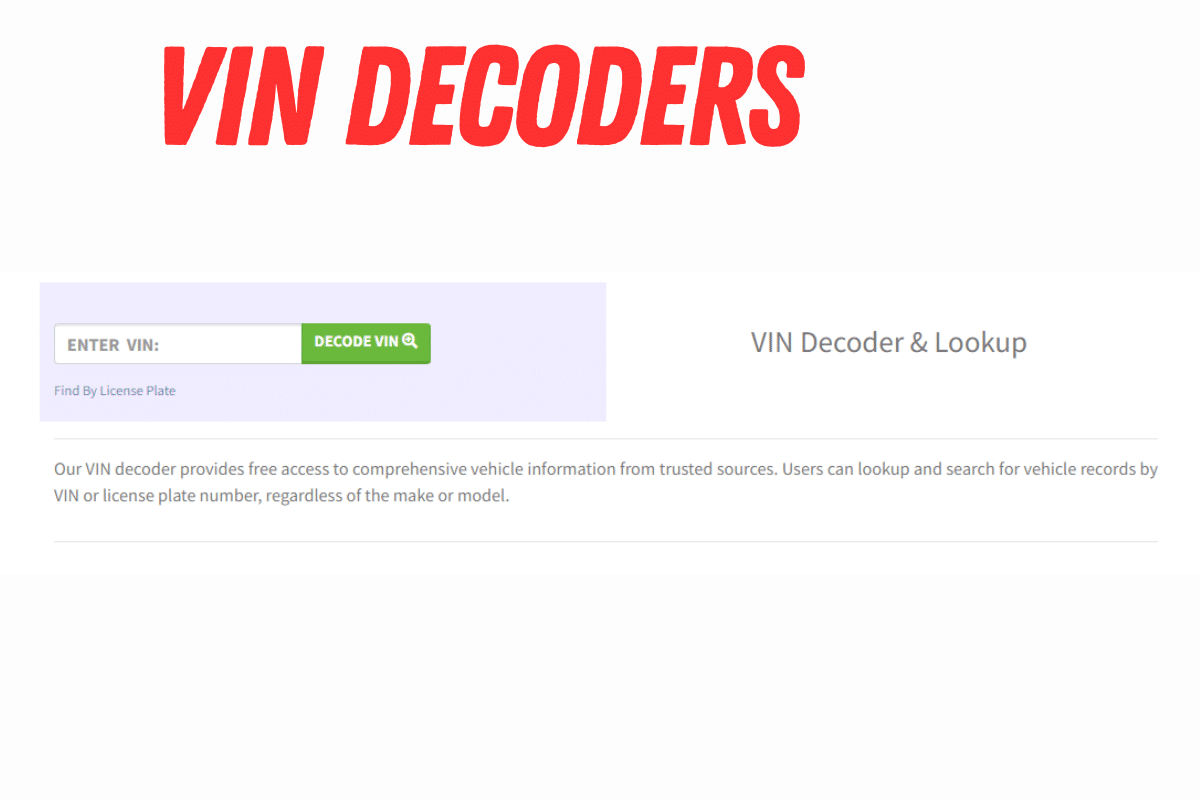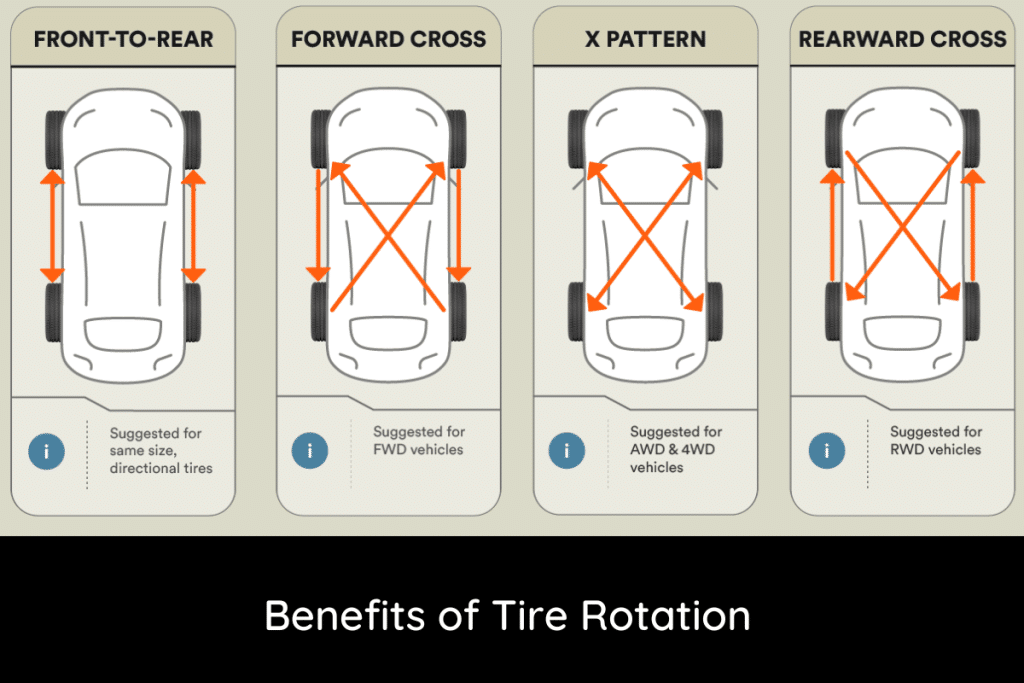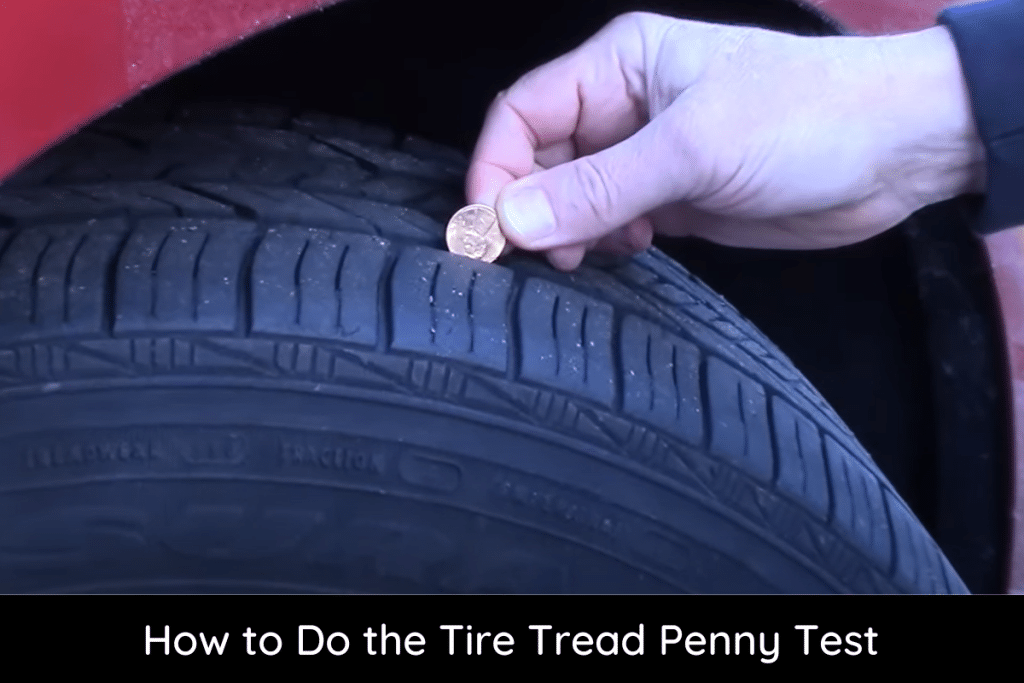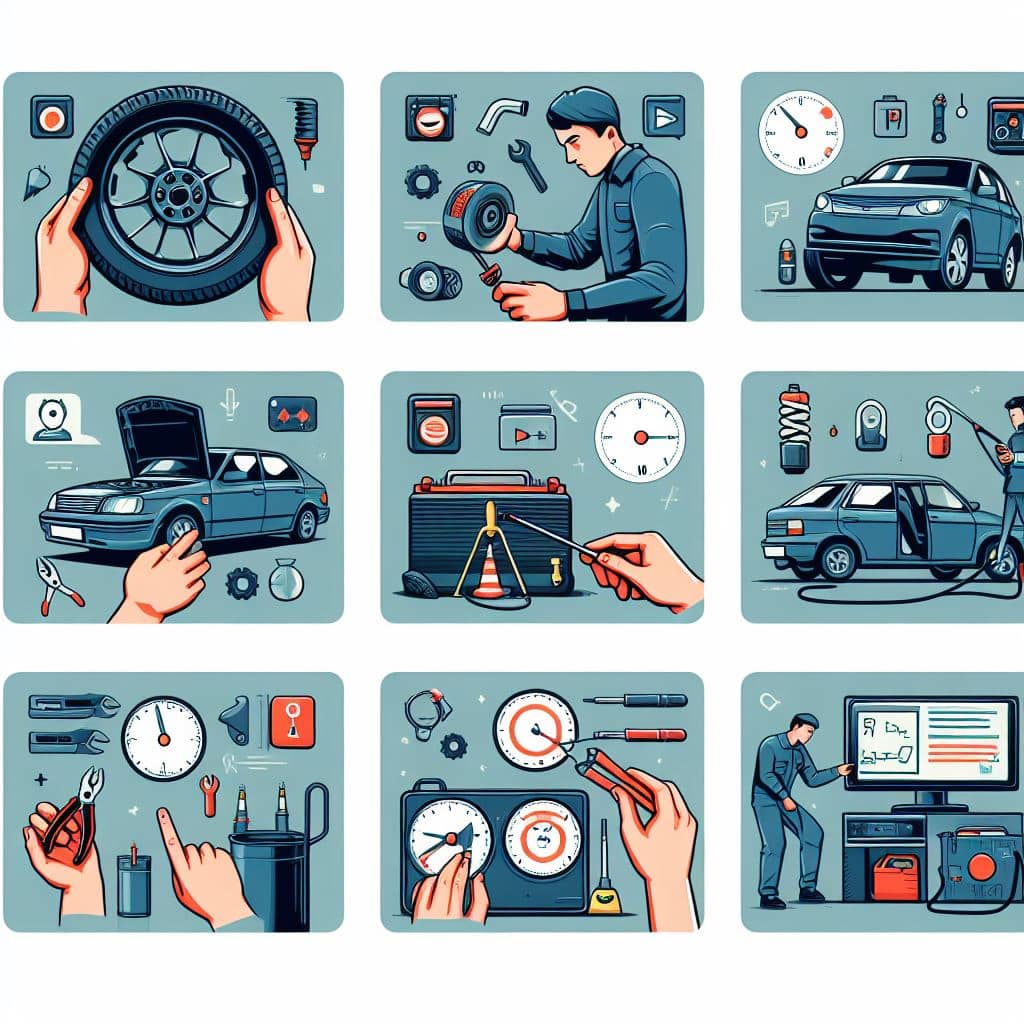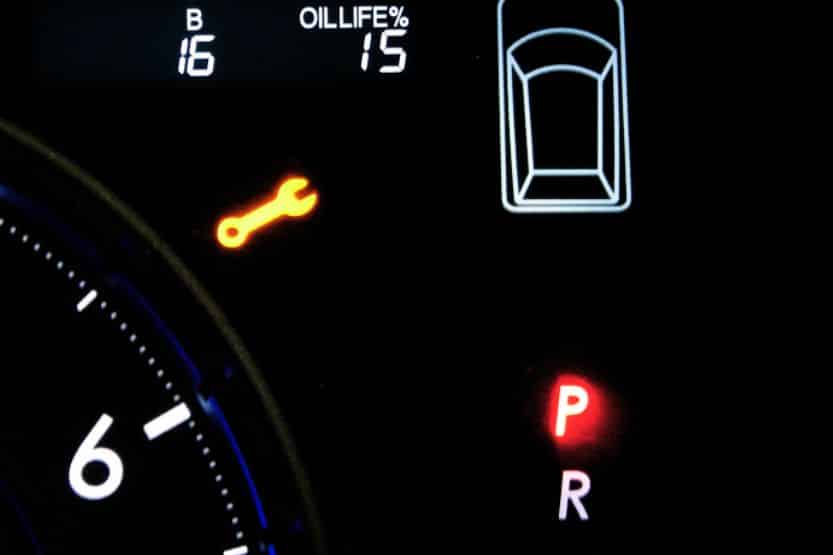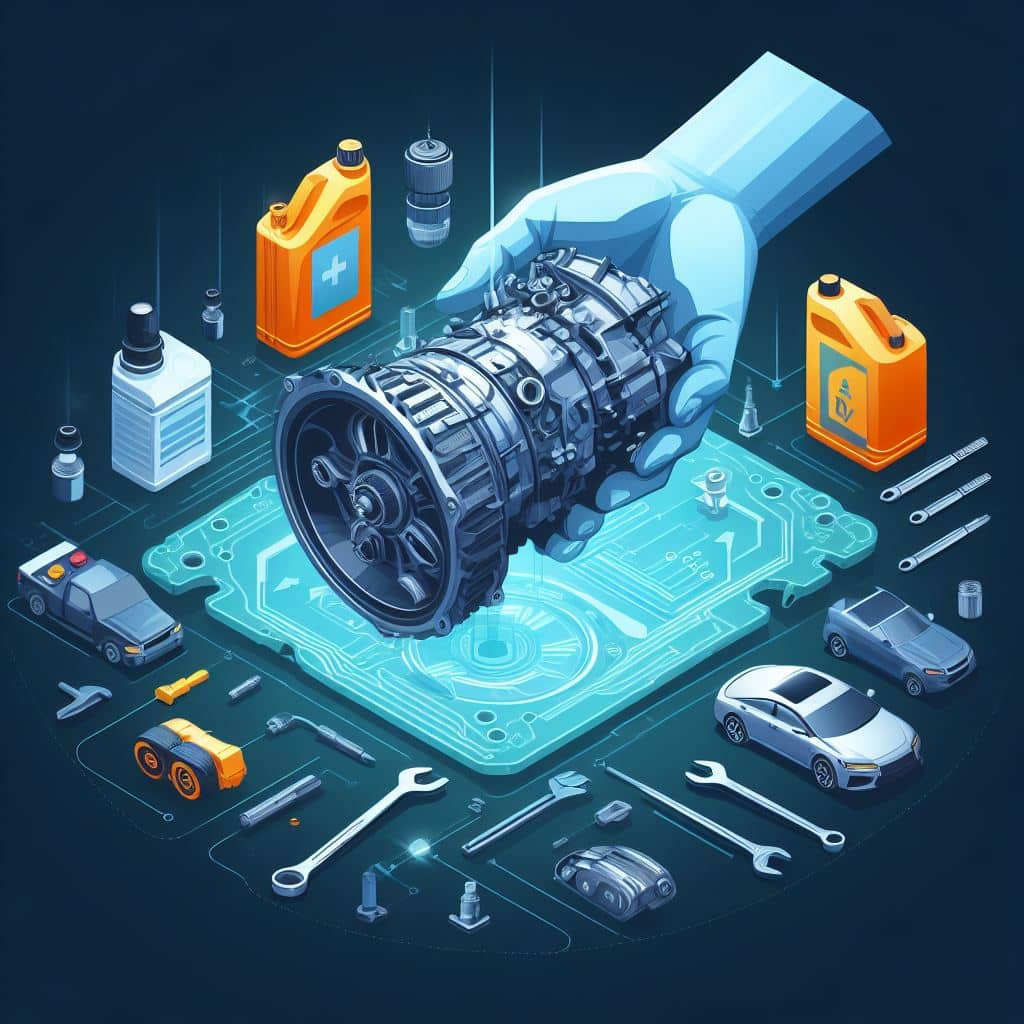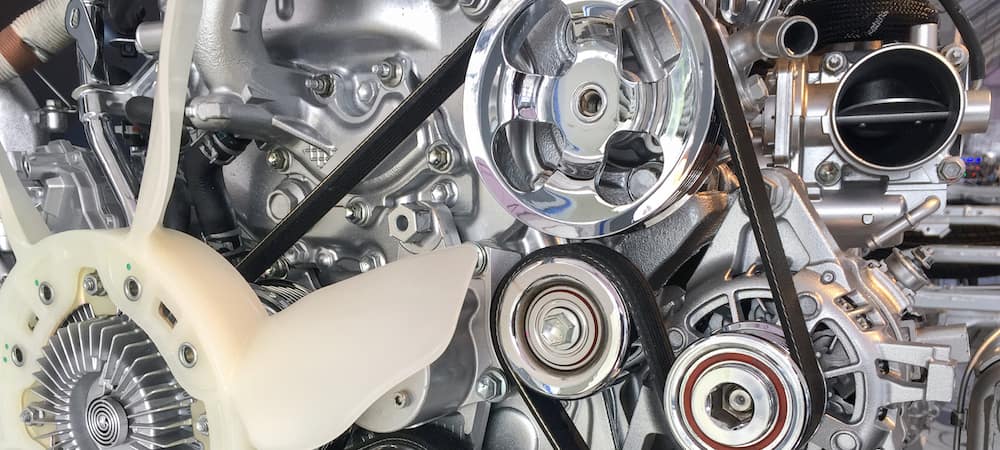Premium air for tires refers to the process of inflating tires with nitrogen instead of regular air. While nitrogen-filled tires have some advantages, such as better pressure retention and reduced oxidation, the benefits may not justify the cost for the average driver.
The cost of filling new car tires with nitrogen can range from $70 to $179, and refills can cost $5 to $7 per tire. Draining air and refilling with nitrogen on existing tires can cost up to $30 per tire.
While some argue that the nitrogen vs. oxygen debate is relevant in racing circles, where tires heat up quicker, the cost of nitrogen is often not worth it for average drivers.
It’s important to note that air is already about 78% nitrogen, so filling tires with regular air is not necessarily inferior, especially for the average driver.
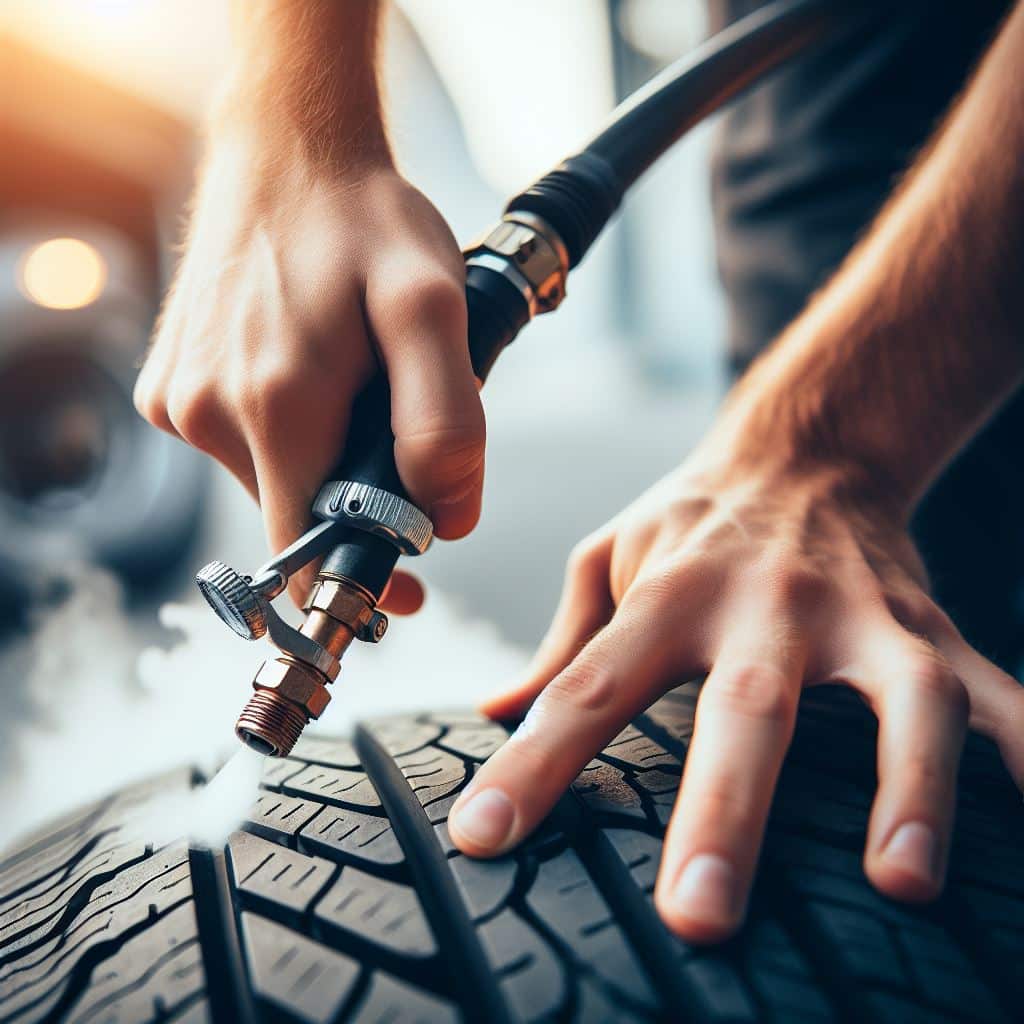
What Makes “Premium Air” for Tires Different?
Forget fancy labels and gimmicks, “premium air” for your tires simply boils down to one element: nitrogen. While your local gas station pumps might deliver a mix of nitrogen and oxygen, true premium air takes it a step further, filling your tires with nearly pure nitrogen (around 93-95%).
So, what’s the big deal about swapping out oxygen for its slightly bigger brother?
Think of tire sidewalls as porous membranes. Oxygen molecules, smaller and more nimble, slip through these pores faster, leading to gradual pressure loss. Nitrogen, the bulky bouncer of the gas world, sits comfortably, effectively plugging the gaps and slowing down this escape act.
This translates to less frequent top-ups, potentially extending your tire lifespan and saving you money in the long run.
Read Also: Penny Trick For Tires
But the benefits don’t stop there. Oxygen, particularly its reactive buddy ozone, can penetrate your tires and wreak havoc.
Over time, oxygen oxidizes the internal rubber, leading to cracks and weakening the structure. With pure nitrogen, this party pooper is left out, minimizing rust and corrosion and potentially keeping your tires healthier for longer.
So, while “premium air” might sound like a marketing buzzword, the science behind nitrogen inflation offers real advantages.
Next time you’re considering an upgrade, remember, it’s not about pampering your tires with champagne bubbles (though they wouldn’t complain!), it’s about giving them the gift of stability and longevity.

Nitrogen Inflation: Pumping Up the Pros
Picture this: your tires, plump and perfect, cruising confidently down the road. No more frantic searches for gas station air pumps or nagging worries about underinflated rubber. That’s the magic of nitrogen inflation; its benefits go far beyond convenience.
Say Goodbye to Leaky Tires
Remember how we compared oxygen molecules to nimble escape artists? Research shows regular compressed air loses pressure up to three times faster than nitrogen-filled tires.
This translates to potentially 4-7 fewer tire checks per year, a win for your time and wallet.
Longer Life, Better Performance
Underinflated tires, like sad deflated balloons, wear unevenly and lose their grip. Studies indicate nitrogen inflation can extend tire life by 20-30%.
That’s not just good for your bank account, it’s also crucial for safety. Properly inflated tires offer superior handling, braking, and fuel efficiency, making every mile smoother and more economical.
Saving Our Green, One Tire at a Time
Leaking tires don’t just drain your air pressure. They guzzle fuel. Underinflated tires can decrease fuel efficiency by up to 3%. By minimizing pressure loss, nitrogen inflation helps you reduce your carbon footprint and save on gas costs.
And hey, even small environmental wins add up!
But wait, there’s more! Nitrogen’s inert nature minimizes oxidation and corrosion inside your tires, potentially preventing rust and internal damage. Its dry nature also helps maintain optimal tire pressure in extreme temperature fluctuations, enhancing performance and longevity.
Data Doesn’t Lie
Research from the National Highway Traffic Safety Administration (NHTSA) revealed that underinflated tires contribute to over 30,000 crashes and 600 fatalities annually.
Proper tire pressure, as maintained by nitrogen inflation, can significantly reduce these risks.
Read Also: Quietest Tires For Hyundai Kona
Nitrogen Inflation: Not All Gold That Glitters (but Maybe Worth a Shine)
Let’s be real, nitrogen inflation isn’t magic dust for your tires. While it boasts impressive benefits, it’s not devoid of downsides, and knowing them is crucial to making an informed decision.
Availability, the Elusive Unicorn
Finding a nitrogen station can be a quest akin to searching for Atlantis. Unlike the ubiquitous air pumps at every gas station, nitrogen inflation might require a detour to specialized tire shops or mobile services.
Be prepared for some extra legwork or potentially higher initial costs for mobile services.
Cost, the Wallet Whisperer
Nitrogen isn’t exactly cheap. Filling your tires with this “premium air” can cost $5-10 per tire, compared to the sweet, sweet nothingness of regular air.
So, while you might save by needing fewer top-ups, the initial investment and higher costs at some locations might not always justify the switch for occasional drivers.
Maintenance, the Ever-Present Reminder
Don’t think switching to nitrogen means you can abandon tire checks altogether. Even the bouncer molecules eventually tire (pun intended).
Nitrogen-filled tires, though slower to lose pressure, still need regular checks and adjustments just like their air-filled counterparts.
Neglecting them, nitrogen or not, can have the same consequences as underinflated tires.
Remember
- Nitrogen inflation isn’t a one-time fix-all. It’s an ongoing commitment with specific requirements.
- Research availability and costs in your area to assess whether it fits your budget and driving habits.
- Regardless of nitrogen inflation, never skip regular tire checks and maintenance.
Ultimately, nitrogen inflation is a choice. Weigh the benefits against the drawbacks and consider your individual needs.
It might be the perfect fit for high-performance vehicles, frequent drivers, or those seeking peace of mind from minimal top-ups. But regular air might be just as good for casual drivers on a tight budget.
Don’t let marketing hype cloud your judgment. Be informed, consider carefully, and choose the path that paves the way for smooth and safe miles ahead.

Nitrogen Inflation: Should You Join the Hype or Stick to Earth?
The nitrogen inflation debate can be as heated as a race track on a scorching day. But fear not, weary traveler, for we’re here to guide you through the maze of myths and facts to find the right path for your tires.
Driving Habits
- Highway Cruiser: You spend most days conquering asphalt jungles? Nitrogen’s slow pressure loss and potentially extended tire life could be your allies. Consider the investment if you value convenience and tire longevity.
- Weekend Warrior: Do your tires hibernate most of the week? Regular air might suffice. However, if you participate in track events or push your car hard, nitrogen could offer performance and safety benefits.
- City Slicker: Frequent stop-and-go traffic can be harsh on tires. Nitrogen’s reduced pressure fluctuations might offer some protection, but consider its availability and cost before switching.
Vehicle Type
- Luxury Ride: Your precious chariot deserves the best, right? Nitrogen can help maintain optimal pressure, potentially improving handling and fuel efficiency. But weigh the cost against your driving patterns and maintenance budget.
- Everyday Hero: Your trusty sedan serves you faithfully. While nitrogen’s benefits remain, regular air might be the most cost-effective choice unless you’re a high-mileage driver.
- Performance Beast: Every ounce of grip counts on the track or off-road. Nitrogen’s stability and potential performance gains could be worthwhile, especially for modified vehicles.
Budget
- Cost-Conscious: Every penny counts? Stick with regular air and diligent tire checks. If nitrogen’s initial cost stings, focus on proper maintenance and responsible driving for optimal tire health.
- Moderate Spender: The convenience of fewer top-ups and potentially extended tire life might outweigh the cost difference. Explore options like mobile services or group packages to balance cost and benefits.
- Big Spender: Nitrogen inflation is your playground! Enjoy its perks, knowing you’ve invested in superior tire performance and potentially reduced long-term costs.
Remember:
- This is a guide, not a rigid rulebook. Consider your individual circumstances and priorities.
- Research availability and costs in your area to make an informed decision.
- Regular tire checks are crucial for safety and performance regardless of air or nitrogen.
Ultimately, the choice is yours. Weigh the benefits, consider your needs, and make the nitrogen call that keeps your tires singing and your wallet happy. After all, happy tires equal happy journeys!

